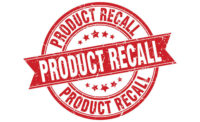Audit anticipation: Reviewing everyday food safety risks
Industry-leading food manufacturers don’t wait for a crisis to happen before taking steps to improve their food safety culture.

Photo credit: Fortress Technology
From farm to fork, many food safety assurance systems rely on robust Hazard Analysis Critical Control Point (HACCP) programs. Verifying the efficacy of measures to ensure compliance with food safety standards remains essential. Can you wait until the next periodic audit to confirm conformance, or should you take action sooner?
Industry-leading food manufacturers don’t wait for a crisis to happen before taking steps to improve their food safety culture. They regularly use audits to identify gaps, potential risks and to verify the effectiveness of their internal controls. This approach not only strengthens customer trust and satisfaction, but also safeguards the brand.
Although audits can be performed internally, they require sufficient time, effort and understanding of the process. An external opinion, performed by a knowledgeable food safety consultant can provide a non-biased, well-informed overview of your food safety plan and practices. This can help to keep unforeseen conformity surprises from adding further disruptive pressures to already complex, and sometimes fragile, food supply chains.
Inspection or audit? Know the difference
The distinction between a food inspection and a food safety audit can get blurred. In food safety circles especially, the two terms are frequently interchangeable. They both help to improve operational performance. And they both assess conformance to set standards. There are, however, subtle differences.
A food safety audit is a systematic evaluation of food facility documentation to determine if food safety practices, programs and related activities, including procedures and record keeping, are achieving planned expectations. Generally, an auditor looks at data over a period of time to see if positive or negative trends are developing.
Food safety inspections, on the other hand, provide a thorough physical review of a food facility to assess what is actually happening during a precise moment in time. This snapshot – typically lasting between two and four days – gives a realistic assessment of conditions that can be both positive and negative.
When inspecting a Critical Control Point (CCP), an inspector will be looking for any contaminants that may prompt an investigation. When conducting an audit, qualified personnel will review the effectiveness of a HACCP plan and ensure it is being implemented correctly.
The FDA Food Safety Modernization Act mandates routine inspections typically conducted by either local health departments or regulatory agencies. Although food safety audits are not a legal requirement, the FDA and USDA enforce substantial financial penalties for violations of food safety regulations. By conducting internal or external audits, food processors can be assured their processes are conforming to these defined food safety standards.
Failing is part of the plan
Any failure can feel like the end of the road. However, in audit terms, a non-conformance issue simply notifies a food processor that something needs to be addressed in order to comply with food safety rules, regulations and supplier contractual obligations.
In order to assess performance and knowledge of good manufacturing practices, a Traceability Performance Assessment can also be conducted. This timed traceability recall exercise can be added to any GMP inspection and helps to promote food safety compliance amongst staff.
When choosing a consultant, look for professionals who are experienced and familiar with the latest regulations in your food sector, such as meat or dairy. It is also advisable to request customer references. Other qualities to look for are good problem solvers. Food safety audit consultants should feel comfortable working unsupervised and monitoring everything from documentation processes to daily practices, without placing undue burden on your production and quality control teams and processes.
Be prepared
An audit checklist should cover all aspects of production that affect food safety practices and HACCP compliance. Most auditors will expect to examine documentation, records, premises, practices, equipment, and processes. Signs of pest infestation, hygiene protocols, temperature control, and food handler and machine operative training and competence will all be scrutinized.
Fortress has published a typical audit-conformance checklist in its latest Food Equipment Audits Whitepaper. Download a free copy.
Post-audit, the successes and non-compliances flagged by the investigation should be examined by the relevant staff and auditing personnel. Once a course of action to address and prevent future non-conformances is established, food processors can implement these changes.
For inspection equipment, specific GFSI standards should be followed. Particularly the testing of metal detectors and X-ray systems.
Moving goalposts
Food safety audits play an essential role in supporting safe food consumption, brand integrity, regulatory compliance, supply chain management, risk assessment and prevention, and promoting operational excellence. Given the numerous critical control points in a processing plant, Fortress advises routinely and systematically revisiting potential hygiene and contamination hazards as part of a regular risk assessment and food safety program.
As more good practice is adopted, the food safety goalposts will inevitably move Food safety is reliant on continuous improvement. Once any changes are reviewed and implemented, HACCP plans should be modified. This ongoing effort drives advances in processes and efficiency, as well as enhancing product quality..
Looking for a reprint of this article?
From high-res PDFs to custom plaques, order your copy today!









